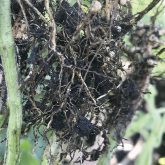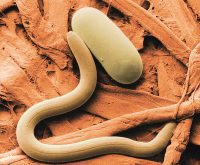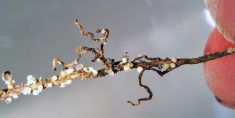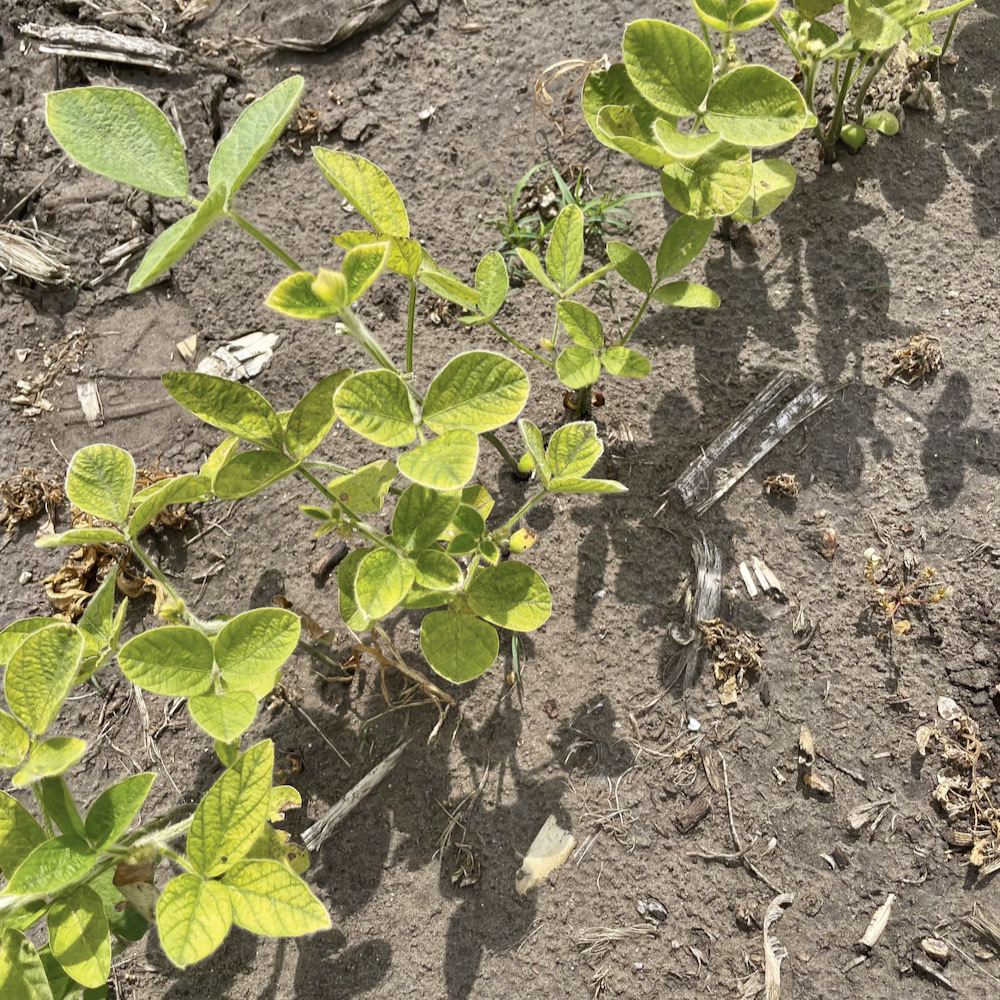Soybean cyst nematode (SCN) is a new-to-Manitoba soybean issue that’s the No. 1 soybean pest in North America, and one a U.S. specialist calls the silent yield robber.
Soybean cyst nematode (SCN) is a microscopic roundworm that attacks the roots of soybean and is the No. 1 soybean pest in North America. John Wilson, extension educator at the University of Nebraska-Lincoln, says the microscopic roundworm attacks the roots of the soybean plants and can negatively affect yields with no apparent symptoms visible on soybean plants in the field.
Read Also

Manitoba boosts stake in cereals centre to $23.5 million
Premier Wab Kinew said the additional project funds will help ‘Trump-proof’ the provincial economy.
SCN was confirmed in fields in four Manitoba municipalities in 2019, and is an endemic problem in most U.S. states. It’s not something that farmers can realistically hope to get rid of once they have confirmed SCN infestations in their fields, but there are things they can do to try and limit its spread and keep population numbers in check.
Speaking late last year at the Manitoba Agronomists Conference in Winnipeg, Wilson emphasized that SCN can be present in one field and not in another that’s right across the road and it’s not an indication of poor management.
Although it’s not possible to visibly distinguish between infested and non-infested plants in the field, there are signs to look for that could indicate that SCN is present. They include unexpected yield losses (up to 40 per cent in some cases) in a perfectly healthy-looking field. Or farmers may have low yield areas on yield maps that can’t be explained because of factors that might normally reduce yields, like herbicide drift, weed pressure, pest or disease issues, compaction or soil type. Over time, soybean yields in a particular field may hit a plateau or start to drop off but when farmers plant other crops in the field, yields are not affected or can still increase.
Another sign to look for is a sudden increase in the presence of SDS (soybean sudden death syndrome) or BSR (brown stem rot) in the field.

“We can have either of these diseases and no SCN or we can have SCN in a field and neither of these diseases, however, if we have a field or portions of a field where SCN concentrations are high, we are more likely to see those diseases,” said Wilson. “That’s because the (SCN) juveniles attack the root and create microscopic wounds where these soil-borne diseases can enter the plant. I have pulled a soil sample from an area of a field with SDS and then pulled a sample 100 ft. over where the soybeans look fine and it’s not uncommon for both of those to come back positive for SCN. When we look at the egg counts in the area where we have the SDS, those SCN egg counts may be up to 10 times higher than in the area where we don’t have those diseases present.”
SCN life cycle
SCN has a life cycle that repeats itself every 25 to 30 days throughout the growing season, depending on the soil temperature.
The only stage of the SCN life cycle that is visible without a microscope is the tiny, white cysts on the plant roots that begin the cycle.
“If we look at them under a hand lens we see they are round or oval, they may be pointed at one or both ends, and on some of them you may notice a kind of gelatinous mass outside of the cyst that contains eggs which are ready to hatch right away if the cyst ruptures,” says Wilson.
If the cyst remains intact, the eggs inside can remain dormant but viable for 25 years or more, and as each cyst can contain up to 400 eggs, it’s an incredibly persistent pest whose population numbers can increase rapidly.
The eggs hatch into a microscopic roundworm that feeds on the developing soybean roots. They excrete an enzyme which causes a breakdown of the cell walls so they can pull more nutrients from the plant. Once the male worms mature, they migrate out of the root and travel up and down it looking for a receptive female, and mate. The female then dies, but her body cavity continues to fill up with eggs until it ruptures through the root wall and forms the cyst structures that start the cycle all over again.
Managing SCN
Managing SCN is about managing the number of eggs that are produced or that emerge. There are three key steps to managing SCN: identification, rotation and sanitation.
Identification is the most important because SCN is so hard to detect that farmers must determine if it is present in a field before they can begin to manage it. There are two ways to identify SCN.
The first is to try and visibly identify the cysts on the plant roots. This can only be done about a month after the soybean plants emerge because it takes that long for them to get through the first life cycle of the season and develop cysts.
“When you are out scouting the field, dig up (not pull) a few plants because if you pull them, you are likely to knock them off the roots,” said Wilson. “If you see cysts you can say yes, you have SCN in the field but if you don’t find any cysts, I would never say you don’t have SCN in the field because it’s too easy to miss, especially at low counts. The cysts might be hard to find because you could be in the wrong area of the field, and it’s not reliable because you won’t have any measure of the density of eggs in the soil.”
A more reliable method of identifying SCN is soil tests. Soil tests can be done at any time of year, but after harvest is probably best and easiest. “Not only are you more likely to detect SCN with a soil sample, you will also have a baseline level that in future you can measure against to see if your management efforts are effective or not,” said Wilson.
Where to soil sample?
Anything that moves dirt, moves SCN, so it’s a good idea to take a core or two at field entries, along fencelines (especially if using tillage that could cause soil to blow and be deposited in these areas), or in high-traffic areas. Farmers should also take samples along creeks or flooded areas or low areas of the field where water pools and can increase the concentration of SCN eggs. Areas with unexplained poor yields, or with SDS or BSR should also be sampled. Because SCN can be highly variable across the field, it’s important to take samples from different areas of the field.
It’s best to take 15 to 25 cores per sample at a depth of six to eight inches deep and to try and sample through the plant roots. Farmers can randomly sample the whole field or sample problem areas separately, taking samples from non-problem areas as well for comparison.
Sampling can be done at any time, but Wilson suggests it may be a good idea to ask the agronomist or field scout who is out scouting or pulling fertilizer soil samples for next year’s fertilizer recommendations to take some additional samples to test for SCN.
In fall, after harvest is a typical time to do these samples, but SCN is easier to detect if there hasn’t been any tillage done, and it’s important to sample right under the crop row to penetrate the root system. Sampling after any crop that soybean is going to follow the next year can give farmers an idea of whether they should choose a resistant soybean variety.
Testing should be done again after six years whether the field is infested or not. “If the field is not infested, and you test again in six years, you will probably still be able to catch it when numbers are low and it’s still easier to manage,” said Wilson. “If you sample and it’s positive and you know the egg count, six years later it’s important to sample again at the same time of year and following the same crop because levels will vary throughout growing season and vary if it follows a different crop.”
If the farmer hasn’t grown the same crop in year six, he or she should wait another year or two until they have and then sample for SCN again. In Manitoba, soil samples can be sent to Dr. Mario Tenuta at the University of Manitoba or AgVise Laboratories to test for SCN.
Rotation
Rotating with other non-host crops can help reduce and maintain low egg numbers in the soil. Normally, anything that farmers grow in Manitoba is not a host for SCN including sorghum, small grains, corn, alfalfa, and most legumes. Dry edible beans, though, are a host for SCN, as are some weeds like stinkweed, common chickweed, shepherd’s purse, wild mustards, henbit and purslane.
The biggest reduction in SCN occurs the first year following soybean and declines more slowly in subsequent years, so the longer the rotation, the better it is to reduce SCN numbers.
It’s also important to rotate the sources of genetic resistance in the resistant varieties farmers grow. Most seed companies offer some choices and the 2020 Manitoba seed guide lists 24 out of 68 varieties that offer SCN resistance, but it may be necessary to find out the source of the resistance from the seed dealer.
There are a number of sources of SCN resistance, and the most common one – PI 88788, which is found in 98 per cent of resistant varieties commercially available is very good but is starting to show signs of breaking down, which is why rotating the source of resistance is crucial.
Research is showing that the populations of SCN reproducing on PI 88788 varieties have started to increase over the last few years, although not as much as they would on a susceptible variety.
Other sources include Peking (PI 548402) and Hartwig (PI 437654), both of which offer excellent resistance, but Hartwig does have some yield-limiting characteristics.
Sanitation
Cleaning equipment before moving it between fields is important to keep SCN out of non-infested fields but farmers aren’t likely to want to stop to pressure wash their equipment halfway through seeding or harvest. Wilson advises that farmers do all field operations – seeding, planting, tilling and harvesting in infested fields last.
Many of the weedy hosts for SCN grow as winter annuals, so it’s vital to control them as a priority in fall or early spring. “Since winter annuals emerge and grow before soybean, controlling them could reduce one generation of SCN during the growing season,” said Wilson.
Research at the University of Nebraska compared the effect of using resistant and susceptible varieties on 29 SCN-infested fields in a corn/soybean rotation, and although the effect on yield wasn’t consistent, the effect on SCN reproduction was. At all 29 sites, sampled in spring and fall, there was an 18 per cent reduction in egg numbers where they had planted resistant varieties, while fields that had susceptible varieties had almost a 300 per cent increase in SCN populations.
“Once you have SCN in a field, we do not recommend planting a susceptible variety in there at all,” said Wilson.















